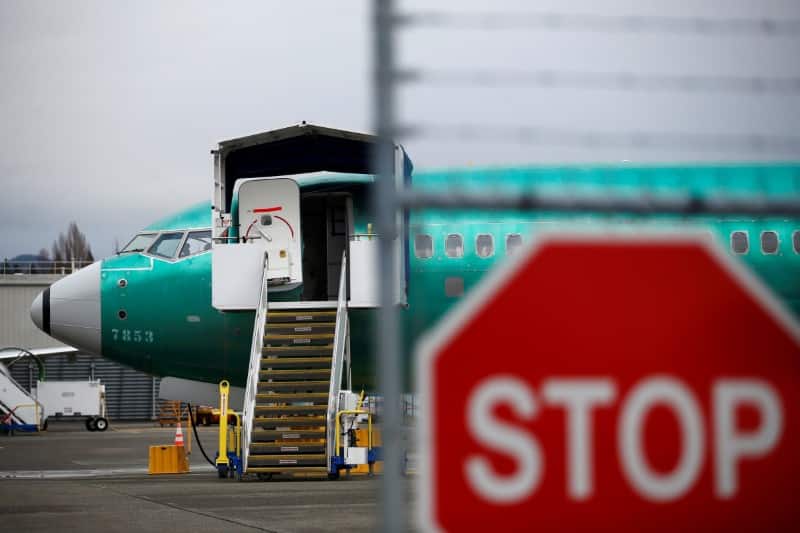U.S. factory activity unexpectedly rebounded in January after contracting for five straight months amid a surge in new orders, offering hope that a prolonged slump in business investment has probably bottomed out.
A rebound in business investment is critical to keeping the longest economic expansion in history, now in its 11th year, on track amid signs of fatigue in consumer spending. The improvement in manufacturing reported by the Institute for Supply Management (ISM) Monday likely reflected an ebb in trade tensions between the United States and China.
But manufacturing, which accounts for 11% of the U.S. economy, is not out of the woods. Boeing <BA.N> last month suspended production of its troubled 737 MAX jetliner, grounded last March following two fatal crashes. The coronavirus, which has killed hundreds in China and infected thousands globally, could disrupt supply chains, especially for electronics producers.
“A first step toward de-escalation in the trade war certainly helped,” said Tim Quinlan, a senior economist at Wells Fargo Securities in Charlotte, North Carolina. “We are only beginning to understand the potential effects of the coronavirus outbreak and what it means for supply chains.”
The ISM said its index of national factory activity increased to a reading of 50.9 last month, the highest level since July, from an upwardly revised 47.8 in December.
A reading above 50 indicates expansion in the manufacturing sector. The ISM index had held below the 50 threshold for five straight months. Economists polled by Reuters had forecast the index rising to 48.5 in January from the previously reported 47.2 in December.
Washington and Beijing signed a Phase 1 trade deal last month. The deal, however, left in place U.S. tariffs on $360 billion of Chinese imports, about two-thirds of the total, which economists say will remain a constraint on manufacturing.
The ISM said “global trade remains a cross-industry issue, but many respondents were positive for the first time in several months.” The survey’s forward-looking new orders sub-index jumped to a reading of 52.0 last month, the highest since May, from a revised 47.6 in December.
A measure of exports orders raced to the highest level since September 2018, while a gauge of imports touched levels not seen in 11 months. Manufacturers also reported paying more for raw materials and other inputs. The survey’s measure of prices paid hit its highest level in 10 months, suggesting some building up of inflation pressures at the factory level.
The Federal Reserve held interest rates unchanged last week and could keep monetary policy on hold at least through this year. Fed Chair Jerome Powell told reporters that while manufacturing PMIs in many jurisdictions had moved up off of their lows, “I would just say none of this is assured.”
The 18-month-long U.S.-China trade war has pressured business confidence and undercut capital expenditure. Business investment contracted in the fourth quarter for the third straight quarter, the longest such stretch since 2009.
The ISM’s factory employment index rose to 46.6 last month from a revised reading of 45.2 in December. It, however, held below the 50 level, suggesting manufacturing payrolls could remain weak. Factory employment increased by 46,000 jobs in 2019 after rising 264,000 in 2018.
The dollar rose against a basket of currencies, while U.S. Treasury prices fell. Stocks on Wall Street were trading higher.
MIXED SURVEYS
The rebound in ISM’s closely watched national survey follows a series of mixed readings on the manufacturing sector at the regional level. A purchasing manager survey tracking the Chicago region slumped to a four-year low in January.
A manufacturing index from the Dallas Fed continued to show contraction in the district that covers Texas.
But factory activity in areas monitored by the Philadelphia and Richmond Fed showed significant improvement in January, closely aligning with ISM’s findings. A separate survey on Monday from data firm IHS Markit showed its manufacturing sector PMI fell to a reading of 51.9 in January from 52.4 in December.
“It is hard to tell a consistent story that covers all of the manufacturing surveys,” said Daniel Silver, an economist at JPMorgan in New York.
Economists estimate Boeing’s biggest assembly-line halt in more than 20 years could slice at least half a percentage point from first-quarter GDP growth. The economy grew 2.3% in 2019, the slowest in three years, after expanding 2.9% in 2018.
The coronavirus could hurt global growth, which has been stabilizing after declining since mid-2018. The strengthening in the manufacturing surveys, including the ISM, has left some economists hopeful that the so-called hard manufacturing data like durable goods orders and industrial production would follow suit. They, however, caution that hard manufacturing data could remain soft for a while because of the production cuts at Boeing and supply chain disruptions from the coronavirus.
“The production cuts at Boeing could yet weigh on the hard data at the start of this year,” said Andrew Hunter, a senior U.S. economist at Capital Economics in London. “The likely hit to manufacturing activity in China from the coronavirus shutdown could also become a headwind for U.S. producers, particularly those reliant on intermediate parts from China.”
While manufacturing appears to be stabilizing, the construction sector is showing some weakness. A separate report from the Commerce Department on Monday showed construction spending decreased 0.2% in December, the first drop since June, as investment in both private and public projects fell.
Construction spending increased 5.0% on a year-on-year basis in December. For all of 2019, construction spending fell 0.3%, the first annual decline since 2011, after rising 3.3% in 2018.
(Reporting By Lucia Mutikani; Editing by Chizu Nomiyama and Andrea Ricci)

























 Continue with Google
Continue with Google